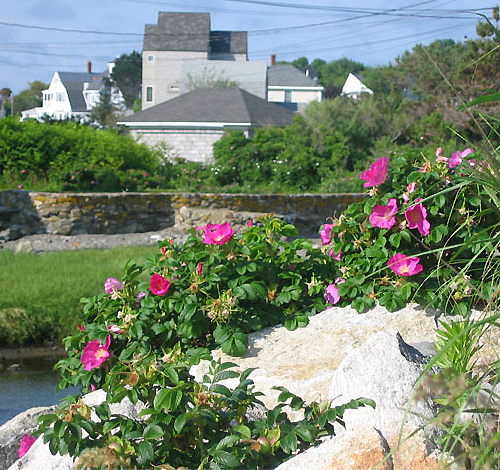User:Walter/Story1
Rugosa roses have become seaside marvels
Hearty non-native species brought to US for vitamin content
A common sight in almost any part of Rye, and particularly along the shore roads, is the Rosa Rugosa or wild rose. Rugosa roses define the word “tough” in the botanical field, as they grow and thrive in the worst of soils and with little or no care.
| Rugosa wall hangers. (Hank McFarland photo) |
It is not uncommon to see Rugosa roses growing and thriving in the sand and gravel which make up the Route 1-A roadbed through Rye where they receive a regular dose of winter sand and salt from the winter road maintenance efforts and also a good soaking of salt water from high tides brought about by seasonal storms. “Live free or die” is not only the New Hampshire state motto, it could also be applied to the hearty Rugosa roses.
Rugosa roses are native to the northern sections of Korea, Japan and China and were imported to New England in the middle of the 19th Century. At that time they were brought to America for the purpose of harvesting the rose “hips,” the seedy little tomato-like fruits that appear after the flowers fall from the plants. The rose hips contain large amounts of Vitamin C, and in those days the seeds from the hips were ground up and mixed with flour for use in various baked goods.
It did not take long for our forefathers to appreciate the beauty of the roses and to note their hardiness. Rugosa roses love the coastal tidal lands that are periodically swept by high tides and salt water, which can roar through the plants spiny stalks depositing seaweed and coastal debris.
...
